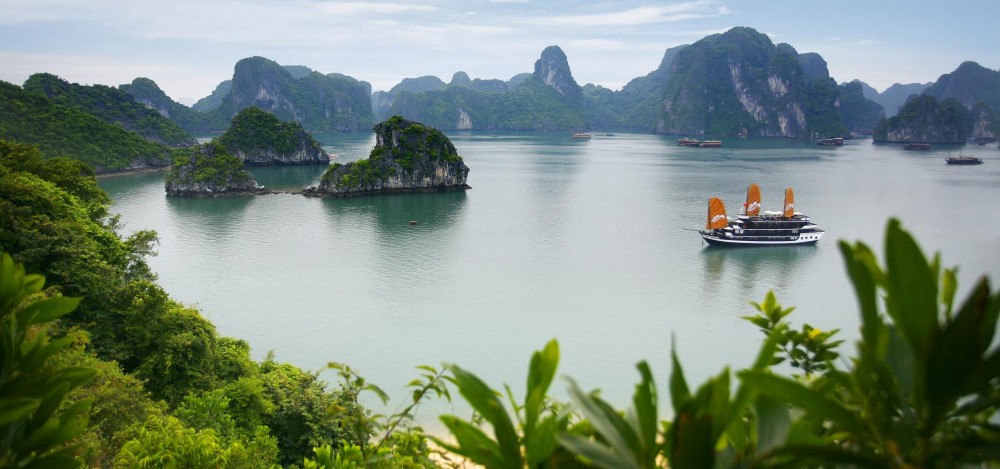9:20am, the class arrives in front the Reunification Palace, formally known as independence Palace, in Ho Chi Minh City. When I first saw the palace I thought, ‘is this a hotel?” because dozen buses from various tourist groups and travel companies dropping people in front. This attendance has been typical during our visits to the few government sponsored historic sites. Makes sense, the palace symbolizes Vietnamese independence after defeating the United States puppet government. April 25th 1975. This day is crucial in Vietnamese consciousness because it represented the success of nearly a century of French and then U.S. imperialism. At least that’s the sentiment that I’ve gotten from consulting the trusty Lonely Planet and guides.
The palace was chaos when we walked it; there was an endless stream of international tourists and several Vietnamese student groups visiting. After looking at ““Thanh niên Vietnam” on their blue uniforms and a little bit of Google, I found out that these students were from the Ho Chi Minh Communist Youth Union. Our guide said that these students went on this trip to learn about reunification to prepare for the 40th anniversary of Vietnamese independence. Our class was there to get some perspective on ways the Reunification Palace has attributed to building national narrative and memory of the American War.
Touring Reunification Palace was a perplexing experience. Our tour guide was energetic, dynamic and really enthusiastic. She was confortable enough to joke with us, calling everyone VIP (Very International People). The majority of the site did not convey any distinct history of the war. I felt like the group was taking an open house tour of Ngo Dinh Diem’s palace, we started on the first floor with the reception space, then the meeting room, conference room, offices, then bedroom etc. Every floor gave us a look into where the Republic Of Vietnam’s leaders worked, lived and even partied. I thought the tour was a bit dry because I wasn’t expecting an open house, I wanted to learn the about the narrative of Vietnamese heroism. Reunification was a significant event in Vietnamese history and going from room to room did not give me a better sense of what this history meant to Vietnamese people and the national government. Though this absence of clear distinct message could be indicative of a larger memory construction project, filled with erasure of a heroic past and anti-imperialism. There were two instances in the entire museum that gave me a clear picture of Vietnamese heroism, revolutionary struggle and the triumph of Communism. There was one room in the entire palace dedicated to the history of the Fall of Saigon. This photographic exhibit provided audiences with historical context for the war and – more importantly – it emphasized the defeat of the United States. I enjoyed this exhibit because of the clear chronological narrative of Vietnamese triumph and a historic reunification of Vietnam after nearly two decades of conflict. This room is more cluttered and dingy as compared to the other pristine and expansive rooms in the palace. Vietnamese reunification is an integral part of Vietnamese nationalism, but there was only one small worn-down room dedicated to this narrative throughout the entire palace.
The second instant that provided me with some context of Vietnamese history was a 37-minute propaganda video that gave viewers a history of the Vietnam War beginning with the defeat of the French at Dien Bien Phu in 1954.until the defeat of the Southern Vietnamese puppet government. The most striking aspect of this video is the demonization of United States government and imperialism on Vietnamese soil in an otherwise sterile historic site. The video also had clips that highlighted Vietnamese soldiers fighting and winning battles throughout the war. This video provided context that helped me understand the Vietnamese struggle throughout the war, which is significantly better than peering into the different luxurious guest rooms in the palace.
Though the palace’s architecture is grand, the rooms are beautiful, I believe that government has to be more deliberate in what it wants to convey in the reunification palace. As the space that represents Vietnamese reunification, there may need to be a stronger emphasis on the struggles against the United States in Saigon. I suspect that downplaying the victorious narrative of Vietnam is a part of a larger scheme to placate foreign tourists in order to generate more international attention and visitors to the Reunification Palace. I’m curious about how the Reunification Palace will be used to celebrate the 40 year anniversary of the fall of Saigon and 85 years of Vietnamese communism.
